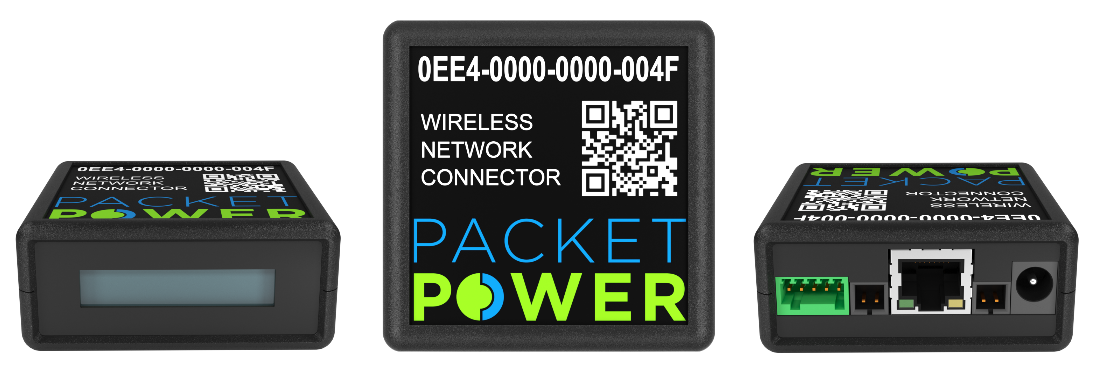Packet Power Unveils 54 New Wireless Power Monitoring Products
Packet Power is expanding its industry-leading range of wireless remote power monitoring systems with the announcement of a new 3-phase wireless...
![Wired vs. Wireless Power Monitors [VIDEO]](https://www.packetpower.com/hubfs/Blog/Protocol%20comparison.jpg)
Power monitoring is essential for efficient, cost-effective facility management. The stakes are even higher in critical facilities where power or environmental anomalies can lead to expensive equipment damage and customer services failures.
Power monitoring helps identify and resolve problems and proactively manage power usage. This enables facilities managers to control costs, limit the risk of outages, and respond faster if there is an outage. You can get the data from your power monitor through a wired connection or any number of wireless technologies. Here is how your options compare.
Simply put, wired power monitors are connected to the data network via physical wires and each meter is assigned a separate network address.
Low monitor costs: Wired devices tend to be less expensive
Speed: Wired connections can be faster than wireless although advances in wireless protocols have closed this gap.
Reliability: A hardwired network is not susceptible to wireless "radio" interference.
Security: There is no opportunity for someone using an unauthorized wireless device to snoop for data.
Higher total cost of ownership: Installation and ongoing maintenance costs are higher than for wireless monitors. The cost to install physical wires and the IT resources needed to perform network drops, assign IP addresses, and network switches can be quite high. More time will likely be needed to access cables when performing maintenance.
Flexibility: Physical wires reduce flexibility during installation, like when the cost to run wires to desired equipment is prohibitive. And there is a lack of flexibility when changes need to be made. Moving cables is time consuming and expensive.
Scalability: Each additional monitor requires additional wiring work. As your needs grow you can also run into physical limitations like port availability and space for additional cables.
Reliability: Damage to cables or cables becoming unplugged during maintenance work or human error can cause reliability problems. Some wired networks are "daisy-chained" and a failure at one point in the network will cause all downstream points to lose connectivity.
Wireless monitors do not require physical wires to transmit monitoring data. To weigh the pros and cons of a wireless monitor, you need to look at not only the capabilities of the monitoring device itself, but the wireless protocol it uses. Broadly speaking, there are some distinct advantages to going with wireless power monitors, regardless of what data transfer protocol they rely on.
Easy to install: Wireless monitors save installation time, money, and headaches. With wireless, you don’t need to run cables through rooms, walls, or over long distances.
Less expensive overall: Wireless monitors may cost more to purchase, but during installation and over time, the simplicity of a wireless monitor's installation and maintenance can lead to lower total cost of ownership.
Flexibility: Wireless monitors can be installed without regard to data cabling constraints and can be located at the optimal monitoring point.
Scalability: Leading wireless network protocols are auto-configuring, greatly reducing the time and complexity associated with planning and operating large monitoring networks.
Reliability: Modern wireless networks are designed to automatically find a working path if a component fails.
Security: Wireless monitoring networks can operate entirely "out of band" of core wired data networks, reducing the chance of a core network intrusion coming through the monitoring network.
Signal interference: Wireless signals can lose strength over distances and between barriers (rooms, walls, equipment, etc.). And some type of devices generate radio "noise" that can create interference. Some wireless monitoring devices can also create signal interference themselves.
Transmission rates: Depending on the protocol used, some wired connections will offer higher throughput than some wireless networks.
Battery life: Wireless environmental monitors are often battery-powered to avoid connecting to a power source. At some point (often after 4+ years), those batteries will need to be replaced.
Packet Power wireless monitors make instrumenting a facility faster, simpler and less expensive than wired solutions. We understand that standard wireless protocols such as WiFi and ZigBee often fail to provide acceptable performance and stability. So we built our own wireless protocol specifically for critical facilities like data centers.
To enhance security, the advanced mesh protocol can only carry data related to monitoring, distinguishing it from general purpose protocols. It also provides for a complete separation of the wireless monitoring network from the wired data network. The resulting mesh network is more resilient and secure than other systems.
Packet Power's self-configuring, self-optimizing mesh network makes installation and ongoing maintenance simple. Adding new monitors is easy as the system automatically configures and manages itself. Because the system determines the optimal path for every transmission, performance stays consistent even as the network grows. And every Packet Power device comes preconfigured, eliminating the need for valuable IT resources during installation.
Packet Power's advanced technology delivers wireless proven to work in critical facilities run by colos, financial services firms, government agencies, educational institutions and telcos worldwide. In these demanding environments, the ability to handle metal and/or noise interference is critical. Packet Power's mesh topology piggybacks to form a wireless daisy chain that sidesteps interference by utilizing both 900 MHz and 2.4 GHz technology.
Packet Power wireless monitors have never failed to make a strong network connection in any facility where they've been installed. We make monitoring easy and cost effective.

Packet Power is expanding its industry-leading range of wireless remote power monitoring systems with the announcement of a new 3-phase wireless...

Your energy costs are likely going up. It's an unavoidable expense because you need electricity to do business. How can you reign this in? The first...

No more stranded smart power strips! Packet Power now provides an easy way to make supported metered devices not connected to a network work over...